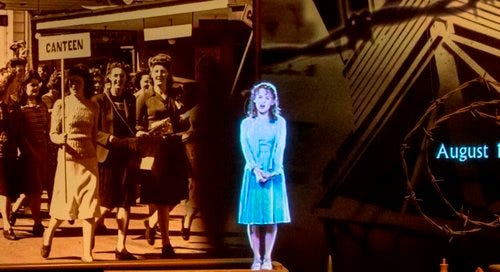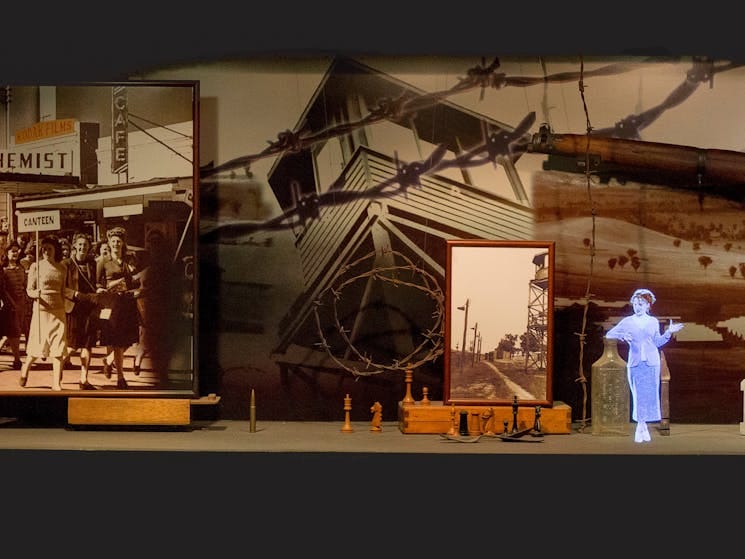POW Hologram Theatre, Cowra Visitor Information Centre, Cowra, NSW, Australia
I recently read travel writer Bill Bryson’s book “Down Under” (2000) in which he recounts his epic journey through Australia in 1998 and 1999 (I was reading this to satisfy my personal obsession with Australia). A major draw for why I admire Bryson’s writing is that he inserts himself right into the heart of every facet of a country: cuisine, shopping, nature, athletics, political affairs, religion, and, of course, arts & culture. With an insatiable desire to learn about a place inside-out, Bryson visits just about any and all museums that come his way: art, history, agriculture, aviation, zoological, etc.
In “Down Under”, one of the sites he visited especially piqued my interest from an Art Historian’s perspective. The POW Hologram Theatre at the Cowra Visitor Information Centre in rural New South Wales is an audiovisual presentation chronicling the Cowra Breakout of 1944 when Japanese soldiers escaped a prisoner of war camp. The explanation for this major event is narrated by a miniature holographic image of a young girl named Claire whose image is perfectly reflected against an historical diorama of photographs, candles, rifles, barbed wire, and other items.
She moves around each piece recalling the trauma and bloodshed that ensued when the Japanese prisoners attempted to flee and the lives lost on both sides. The mixture of music, gunfire, and other sounds adds to the solemnity of this presentation (full video below). Considering Bryson saw this presentation 25 years ago and this remains an important feature in Cowra in 2024, it is remarkably telling that this approach to curation has been extremely successful. Though this goes more towards history, I truly believe that art museums need to take a page out of Cowra and rethink how audiovisual presentations in the arts can be enhanced for the benefit of all visitors (perhaps a life-size hologram of an artist taken from an interview as they explain the meaning behind a piece they created or techniques employed is one such proposition I offer).






